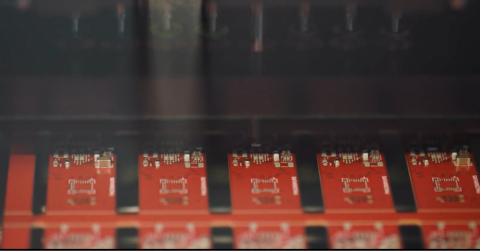An Introduction to Multi-Board Design in Altium

Brain games are a good way to stay sharp. One of my favorite ways to implement this is by doing daily puzzles. Although I love the crossword puzzles where you complete the words from a given clue, I think puzzles that require you to put the pieces together can be the most challenging, especially when it is a group activity. It reminds me of one of the more daunting problems for engineers and PCB designers, which is multi-board design. Not only are the circuit board layout steps multiplied by X (the total number of PCBs), but they also have to be interconnected. These issues are exacerbated when the multi-board design is being done by multiple designers.
Fortunately, the developers of Altium have built-in specific functionality that allows you and your colleagues to easily build and collaborate on multi-board designs. After all, your boards should not have an unmanageable design process to them. You should be able to clearly understand where traces need to go for a signal with the tools and layout to communicate a multi-board system to a design team. Let’s take a look at this unified design tool, multi-board assembly, multilayer PCB, and system design and how it simplifies the processing of putting all the pieces of your multi-board design together.
Multi-Board Design with Multi-Board Assembly
If your organization works on complex printed circuit board designs that are comprised of multiple circuits, each of which may have its own board, then you engage in multi-board design. The problem is that most PCB design software packages do not target this as a priority. Therefore, you may find yourself frustrated and your projects requiring more time than you would like or have to complete. Fortunately, the Multi-board Assembly functionality of Altium software was developed with you in mind.
Fig. 1 Multi-board design with Multi-board Assembly
In Fig. 1 above, a multi-board assembly design is shown along with a listing of the "components" it contains. In Altium software, multi-board assemblies are denoted by *.MbaDoc and its contents are referred to as components. The Multiboard Assembly panel, shown at right in the figure, provides a listing of the components, which typically are the boards (*.PcbDoc files, including component listings) and case designs in the form of *.step files. Once a MbaDoc has been created, you enjoy much the same capability that you have with a single *.PcbDoc.
Creating a Multi-Board Design
A multi-board design may be created in the following ways:
- From a single schematic
Normally, a single schematic is compiled into a single PCB, a simple step-by-step procedure. It is also possible to segment a schematic into sub-circuits that may then be separately compiled into multiple PCBs. The preferred way to do this is to first create multiple schematics.
- From multiple schematics
Schematics may be created in levels, wherein a top-level schematic may contain multiple lower-level schematics. This design is helpful to simplify a design as well as to allow for large complicated designs that may span several pages to be constrained within a smaller single-page working environment. Another way to work with schematics that span several pages or contain several definable sub-circuits is to create separate schematics for each page. These in turn may be compiled into multiple PCBs.
- From multiple PCBs
The easiest way to create a multi-board design is to create a multi-board project (*.PrjMbd) and simply add existing PCBs.
Adding to a Multi-Board Design
Like other projects, multi-board projects may be accessed from the File menu at the top left of the main window or from the Panels tab in the lower right corner. The Multiboard Assembly panel has three icons for adding to your multi-board project. From left to right:
- Adding multi-board designs
Fig. 2 Adding multi-board designs
- Adding PCBs
Fig. 3 Adding PCBs
- Adding cases
Fig. 4 Adding Cases
Working with Workspaces
Altium is an integrated unified PCB design and development software environment where designers can simultaneously access schematics, PCBs, and BOMs. This capability allows you to highlight and access portions of your multi-board design from the project structure listing, as shown in Fig. 5.
Fig. 5 Highlighting from MBA File Structure
Or from the design itself, as shown in Fig. 6.
Fig. 6 Highlighting from MbaDoc
Multi-Board Design with Multiple Users
Whether based on expertise or to facilitate efficient PCB design and development, there are times when multiple designers work on different aspects of a single design. The multi-design environment in Altium promotes this collaboration. One capability that exhibits this is the ability to hide,
Fig. 7 Hidden Case Top
and make visible certain portions of the multi-board design, as shown in Figs. 7 and 8, respectively.
Fig. 8 Visible Case Top
This visibility can be extended down to individual components on specific boards.
By far, the best tool available for putting together all the pieces of a PCB product is Altium. Altium software is the most comprehensive PCB design and development software package in the industry. One example of the advanced capabilities available is the multi-board design functionality, which gives you the ability to design PCBs to any degree of complexity by combining multiple boards. Moreover, you can add case structures to form complete product designs.











 Back
Back